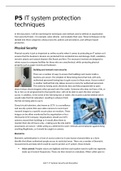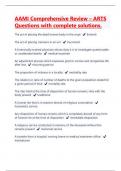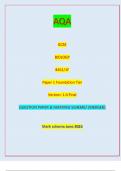Summary
Summary C.P5 Explain how protection techniques can help defend an organisation from security threats. | UNIT 7: IT SYSTEMS SECURITY AND ENCRYPTION | BTEC Computing
- Course
- Institution
C.P5 Explain how protection techniques can help defend an organisation from security threats. UNIT 7: IT SYSTEMS SECURITY AND ENCRYPTION | BTEC Computing
[Show more]





